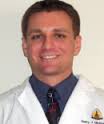Author Interviews, Education, JAMA / 09.12.2015
Most Medical School Graduates Get The Resident Education Required For Licensure
MedicalResearch.com Interview with:
Henry Sondheimer, MD
Senior director of student affairs
American Association of Medical Colleges
Medical Research: What is the background for this study? What are the main findings?
Dr. Sondheimer: The background for this study in JAMA's Med Ed issue of December 8th is that a group of the medical schools' deans asked us (AAMC staff) in 2014 whether there was a differential in placement of African-American, Hispanic, and Native American graduates into Graduate Medical Education at the time of their graduation from medical school. In fact, as shown in this short paper, there is a difference with more current graduates from the under-represented in medicine graduates not beginning their GME immediately post-graduation. However, over time this difference diminishes substantially but does not disappear completely.
(more…)















